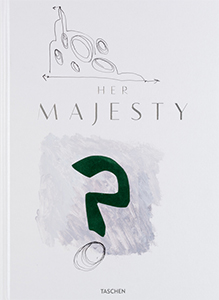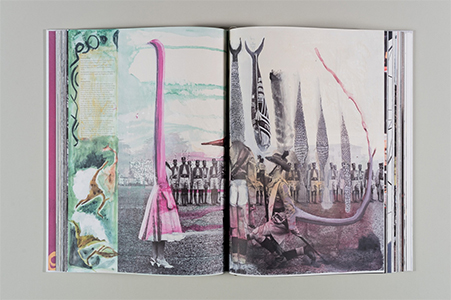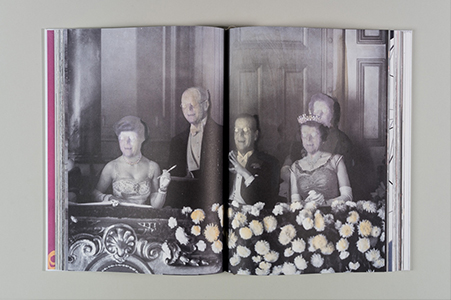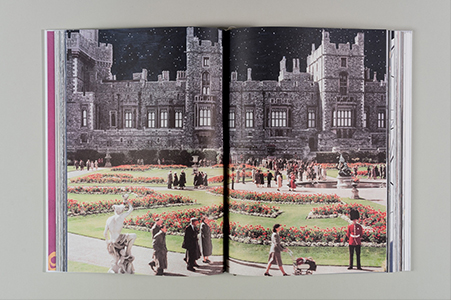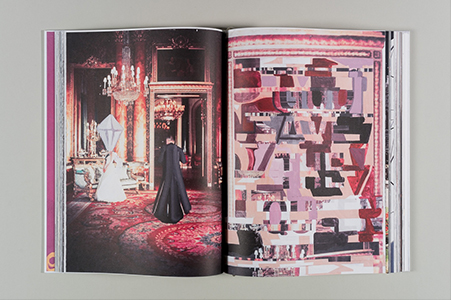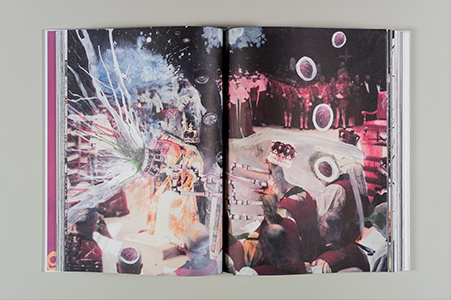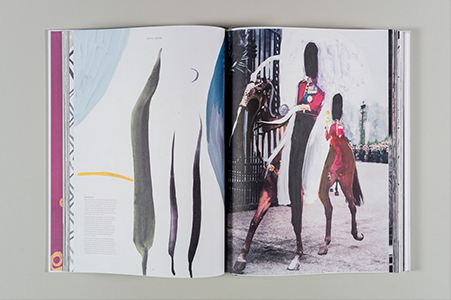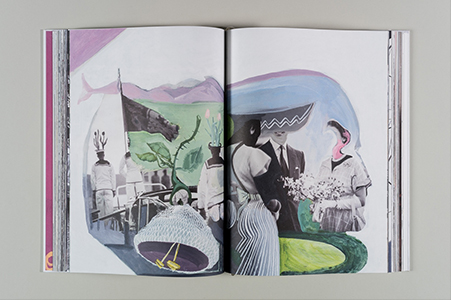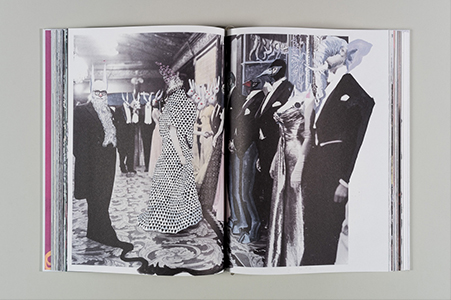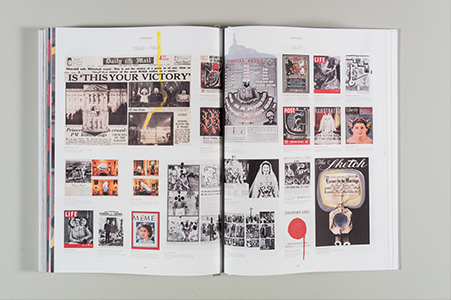The colorful and impertinent hijacking of a luxurious big size Taschen book celebrating Queen Elizabeth's jubilee.
2012 was the 60th anniversary of Queen Elizabeth II's reign, an XL jubilee fêted by Taschen Verlag with an XL coffee table book. And now for a new version of Her Majesty: three Iranian artists, Ramin Haerizadeh, Rokni Haerizadeh and Hesam Rahmanian, have utterly overhauled their copy of the book. The extraordinary life of the world's most famous monarch now blossoms forth in majestic satire: the queen becomes a drag queen, the royal house Animal Farm, and the royal insignia mere stage props and rickety state coaches. This isn't heartless of the Iranian trio by any means, though, for they're actually helping the Queen to a life chock-full of absurdity beyond ritual and representation. Then again, does she even want all this freedom? Her Majesty? is a delirium of caustic wit, a cornucopia of waggish brainwaves and a grandiose masterpiece of draftsmanship and the art of collage.
Limited edition of 600 copies, each with a handmade cover.
Ramin Haerizadeh, Rokni Haerizadeh and Hesam Rahmanian (born in
Iran respectively in 1975, 1978 and 1980, live and work in Dubai) work both individually and in collaboration, but do not form a collective. Their art translates into multiple forms—films, installations, artworks and exhibitions—and often evolves around friends, other artists or people they meet by chance. This includes Iranian artist Niyaz Azadikhah and her sister, a DJ, Nesa Azadikhah, Iranian sculptor Bita Fayyazi, polyglot writer Nazli Ghassemi, American artist Lonnie Holley, gallery manager Minnie McIntyre, Iranian graphic designer and artist Iman Raad, Maaziar Sadr, who works for a telecommunications company in the Emirates, Tamil friends Edward St and Indrani Sirisena. Sometimes these people occupy central roles, sometimes they are marginal, but in either case they bring with them a reality that interrupts the trio's universe and language, and channels their—and our—attention in unexpected territories.
Another important strategy in their practice is the inclusion of various artistic worlds that are as respectfully acknowledged as they are shamelessly appropriated and adapted. This ranges from artworks and objects held in their own private collection to b roader aspects of Iranian culture. Confronted with their projects, their thinking and art-making, one can learn a great deal about how Iranian artists have absorbed modernity—how, for instance, filmmakers, cartoonists and artists such as Ardeshir Mohasses, Ali Hatami, Mahmoud Khan Saba, Kamran Shirdel, or Noureddin Zarrinkelk combined Persian culture with Western influences and vernacular traditions. One realises that there is another chapter of (dissident) modernity yet to be written.

